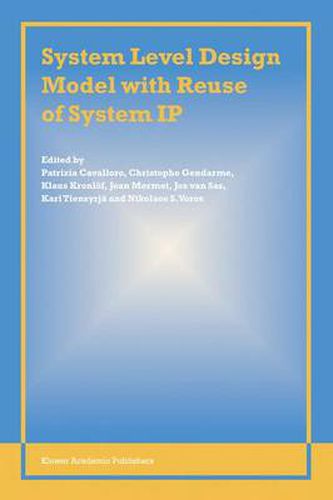Readings Newsletter
Become a Readings Member to make your shopping experience even easier.
Sign in or sign up for free!
You’re not far away from qualifying for FREE standard shipping within Australia
You’ve qualified for FREE standard shipping within Australia
The cart is loading…






This title is printed to order. This book may have been self-published. If so, we cannot guarantee the quality of the content. In the main most books will have gone through the editing process however some may not. We therefore suggest that you be aware of this before ordering this book. If in doubt check either the author or publisher’s details as we are unable to accept any returns unless they are faulty. Please contact us if you have any questions.
This text addresses system design by providing a framework for assessing and developing system design practices that observe and utilise reuse of system design know-how. The know-how accumulated in the companies represents an intellectual asset, or property ( IP ). The contemporary situation regarding system design in general is, that the methods are insufficient, informally practised, and weakly supported by formal techniques and tools. Regarding system design reuse the methods and tools for exchanging system design data and know-how within companies are ad hoc and insufficient. The means available inside companies being already insufficient, there are actually no ways of exchanging between companies. To establish means for systematic reuse, the required system design concepts are identified through an analysis of existing design flows, and their definitions are catalogued in the form of a glossary and taxonomy. The System Design Conceptual Model (SDCM) formalises the concepts and their relationships by providing meta-models for both the system design process (SDPM) and the system under design (SUDM). The models are generic enough so that they can be applied in various organisations and for various kinds of electronic systems. System design patterns are presented as example means for enhancing reuse. The characteristics of system-level IP, a list of heuristic criteria of system-IP reusability, and guidelines for assessing system IP reusability within a particular design flow provide a pragmatic view to reuse. An analysis of selected languages and formalisms, and guidelines for the analysis of system-level languages provides means for assessing how the expression and representation of system design concepts are supported by languages. The book describes both a theoretical framework and various practical means for improving reuse in the design of complex systems.
$9.00 standard shipping within Australia
FREE standard shipping within Australia for orders over $100.00
Express & International shipping calculated at checkout
This title is printed to order. This book may have been self-published. If so, we cannot guarantee the quality of the content. In the main most books will have gone through the editing process however some may not. We therefore suggest that you be aware of this before ordering this book. If in doubt check either the author or publisher’s details as we are unable to accept any returns unless they are faulty. Please contact us if you have any questions.
This text addresses system design by providing a framework for assessing and developing system design practices that observe and utilise reuse of system design know-how. The know-how accumulated in the companies represents an intellectual asset, or property ( IP ). The contemporary situation regarding system design in general is, that the methods are insufficient, informally practised, and weakly supported by formal techniques and tools. Regarding system design reuse the methods and tools for exchanging system design data and know-how within companies are ad hoc and insufficient. The means available inside companies being already insufficient, there are actually no ways of exchanging between companies. To establish means for systematic reuse, the required system design concepts are identified through an analysis of existing design flows, and their definitions are catalogued in the form of a glossary and taxonomy. The System Design Conceptual Model (SDCM) formalises the concepts and their relationships by providing meta-models for both the system design process (SDPM) and the system under design (SUDM). The models are generic enough so that they can be applied in various organisations and for various kinds of electronic systems. System design patterns are presented as example means for enhancing reuse. The characteristics of system-level IP, a list of heuristic criteria of system-IP reusability, and guidelines for assessing system IP reusability within a particular design flow provide a pragmatic view to reuse. An analysis of selected languages and formalisms, and guidelines for the analysis of system-level languages provides means for assessing how the expression and representation of system design concepts are supported by languages. The book describes both a theoretical framework and various practical means for improving reuse in the design of complex systems.